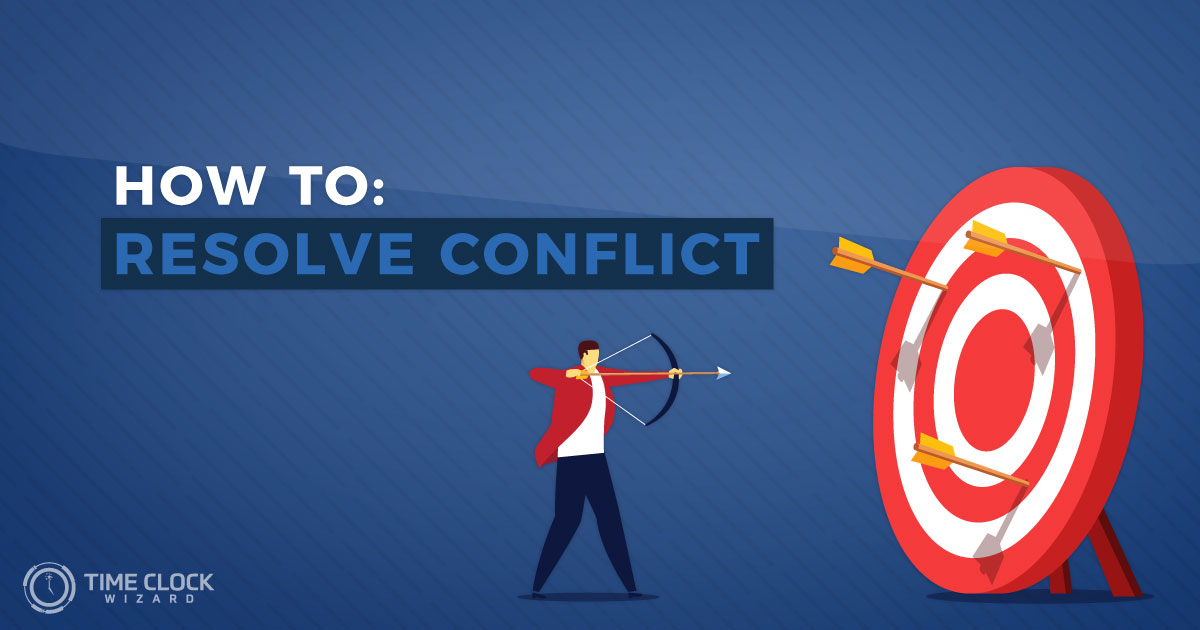
Team Conflict
Team conflict in a workplace is inevitable and is an everyday occurrence for managers to resolve. When employees have such close interaction with the same other employees every day, conflict becomes a part of the routine. As a manager, the main focus is to increase productivity. Productivity is hindered with team conflict. Deadlines are, thereby, buffered. When a problem person clashes from the rest of the team, it is essential to separate them from the rest. However, shunning an employee is not the answer. Labeling and judging do not help better a situation and only encourages distancing employees, when they should be working closely as a team effort.
Nothing good comes from team conflict when the conflicts are not assessed and handled appropriately. Sometimes, when the issue finally reaches human resources, it is too late and the team would have lost a good employee. Avoiding the situation allows the little issues to fester and build into bigger problems. If not combatted appropriately, team conflict can ostracize people and can hamper innovation in a team. However, not every employee hired is the right fit for the company. Keeping the peace at a workplace encourages a pleasant culture at the workplace. Read on to learn when and how to manage conflict within a team.
Conflict Management
It is essential for managers to know how to assess a situation and integrate ground rules for healthy conflict resolution. Conflict is an inescapable truth of workplace routine. It should be handled professionally and justly. Entrepreneur describes how managers can best direct team conflict in a workplace.
For employees involved in a conflict, to them, their perception is what is true to them. For them, their feelings are facts. However, people must understand that opinions and emotions are not facts. It is the responsibility of the manager to conduct mediation from an unbiased and third party point of view. If one employee feels that their values have been violated, their outlook on the situation will be negative. It is the manager’s job to find a resolution and to educate the employees to take a different outlook on the situation and help them see it as others do. This can be accomplished through team building activities.
Managing Team Conflict and How to Handle Conflict in the Workplace
Managers have to take into consideration a few points before assessing and mediating a situation. These include:
Track Records
Employees under stress tend to act irrationally. They can start unnecessary drama. Managers who try to dodge conflicts at all cost will end up regretting it eventually. Throwing all the clothes lying on a floor into a closet does not actually clean up the mess—it only acts as a quick fix to hide the mess. Timing is a key consideration when mediating a conflict. Managers should only combat a situation when they are absolutely sure that there is proof that an employee has a history of doing something wrong that is hindering the other employees’ productivity.
The responsibility of the leader is to make decisions and take important actions to improve performance. How a leader conducts mediations can make or break a business. If a manager sits on an issue for too long, the employees under him or her begin to gradually lose regard for their leader. If the leader takes too long, others will begin trying to attack the situation by making decisions for them, which can, ultimately, be detrimental—they are not in a position to make such decisions for the team. This can make a leader look disreputable.
Honor Differences in Values
Leaders should be understanding of the differences between their employees rather than requiring them to perceive every situation exactly the same way that they do. Learning other employees’ point of views can allow the leader to perceive a situation differently and get a better understanding of the employees and how to prevent future conflict. There are many grey areas to resolving a conflict. With today’s globalization, employees are exponentially more diverse as they were fifteen years ago.
Every employee has a right to respect. This is because each employee is hired to bring his or her unique contribution to the team. Each employee is intelligent with his or her distinct personality.
Avoid Overstepping
Conflicts tend to blow out of proportion if managers are not respectful of employees’ boundaries. Inform employees when they overstep a line and remember that every employee reacts differently. Each individual is diverse in his or her own way, and leaders have to understand their employees and their impact on the work environment. Take into consideration and recognize what triggers certain behaviors and responses from which employees and when. Check the employees when they are out of place, respectfully.
Remember to emphasize to employees that they should be considerate of their peers—that they are not the center of the business and that they work as a team. Each employee should be clear about his or her boundaries. Without proper communication, employees may be enabling the others to treat them a way they do not appreciate. This is a form of dishonesty, which can, ultimately, taint the integrity of a team. Keeping one’s words parallel to one’s thoughts is how to communicate honestly.
How to Resolve Conflict
More often than not, employees can color each other’s perspectives with their own opinions that can alter what they initially believed to be true. Successful leaders are aware of a situation and have the professional maturity to battle the issues. Employees’ opinions are not facts. It is the responsibility of the leader to teach employees and may have to take uncomfortable actions which others prefer not doing in order to benefit the business as a whole.
The stressfulness of a team conflict can start having an influence on employees’ moods. When employees start becoming emotional, reasoning with them becomes increasingly more challenging. Leaders should effectively confront a situation rather than allow the little issues rile into larger problems because they did not acknowledge the differences in the matter when the problem initiated. For some employees, these little differences are their biggest problems at the workplace.
When mediating a conflict and trying to come up with a resolution, managers have to look for the details that are not visibly noticeable for others. Managers are observing through a focus of professional growth and recognize conflict resolution as a form of opportunity. Conflict is not necessarily a problem. Employees do not begin to know each other until a conflict arises between them. This brings out each employee’s authentic character.
Employees do not fully know themselves until they are faced with a situation. They have to act accordingly– their decisions and responses are what define them.
Conflict Resolution Methods and Strategies at Work
Conflict resolution at a workplace mainly comprises of compromise. There is always a middle ground that needs to be met– even if it is more inclined towards one employee over another. It cannot favor one party entirely. This requires accommodation and collaboration. None can really be attained without fluent communication.
When accommodating, it is necessary to understand all parties involved to the fullest extent. Managers cannot fully accommodate every employee. This effort keeps the harmony with employees, however major the issue may be. It is essential to avoid building resentments when accommodating, because giving one party too much preference over another can initiate animosity, whether expressed or not.
Along with accommodating, employees need to collaborate under the guidance of the manager or leader. Assimilating opinions and ideas between various people, the purpose is to find a creative solution that keeps everyone happy. This prevents avoidance of a touchy subject—free and fluent communication is necessary to convey truthful messages between employees. If an employee is unsatisfied with something, he or she should be able to vocalize opinions, appropriately. Employees who tend to avoid situations of conflict generally have low esteem in the workplace. By encouraging collaboration between employees, they have the opportunity to voice their opinions and be able to communicate their ideas more securely and confidently. In some situations, avoiding topics including the expulsion of an well-liked employee will, probably, be more beneficial rather than answering employees questions with responses about how unproductive that employee was for the company.
Compromising With Team Conflict
Compromise is essential for a resolution in team conflict. Managers should take into consideration the essential components in determining a solution when handling a conflict in the workplace. Accommodating and collaborating with employees can negotiate a compromise when mediating a conflict. Instead of initiating a sense of aggressive internal competition in a workplace amongst employees, engaging them to deliberate on a middle ground can be vital in coming up with a successful solution that keeps the workplace at peace.







